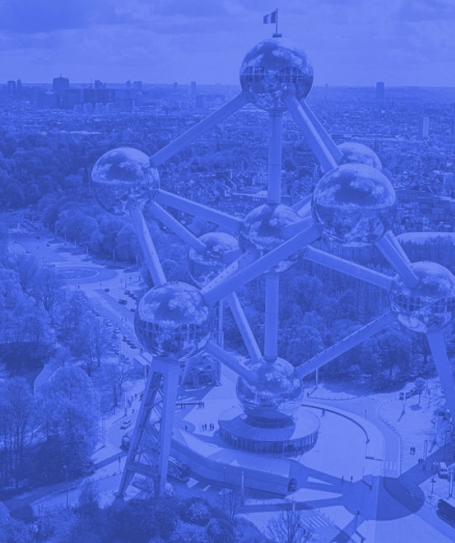A Review of 2021 in the Tech Sector…
As 2020 drew to a close, most people gave a collective sigh of relief, thinking that 2021 must surely herald the beginning of a better year for all - An improvement on a year that had seen global lockdowns, restrictions on travel and bans on socialising, all against a backdrop of the sad passing of so many loved ones.
A year later, with 2021 now behind us, we reflect on a year where we were maybe a little less tightly gripped in the capricious jaws of Covid; a year where businesses re-opened and people continued with hybrid work models. Also, a year where technology continued to be a cross-industry driving force.
One thing that the pandemic has uncovered is a global desire to build a better future – for all. A future where the definition of success doesn’t only hinge on amassed wealth but also on inclusivity and care for fellow humans and the environment we inhabit.
Ambitious enterprises are creating new standards for industry; strategic partnerships will ensure companies continue to successfully address the current disruptions, whilst preparing them to weather whatever comes next.
Increased Demand for Cybersecurity Solutions
As in any adverse situation, there were some unscrupulous individuals ready and willing to take advantage – The work from home (WFM) edict spawned a host of opportunistic and increasingly sophisticated cybercrime, leaving businesses scrambling to rapidly adopt new technologies to secure their data.
In terms of data breaches, ransomware attacks and hacks, 2021 was a tough year but it continued to drive digital transformation and growth, forcing companies to become more agile and resilient. This digital acceleration confirmed technology as the official foundation of global leadership.
Of course, the pandemic was and remains an extreme situation, but it highlighted and heightened the need for tighter controls and processes.
Rapid Response from the Tech Sector..
The tech sector was quick to react and acquisitions of cyber security companies were plentiful as companies sought to add to their lines of defense. Investors too, were quick to recognise the importance of cyber security companies. In December, Sydig doubled its value by raising $350 million, while back in June, communications and networking giant, Cisco, acquired Kenna Security to rapidly detect vulnerabilities and remedy threats.
Ongoing Growth Forecast for the Cyber Security Sector
Cybersecurity has been a “hot” sector for some time, but the pandemic, coupled with mandated WFM (work from home) prompted stronger demand, with more M&A deals at higher valuations than ever before. According to data from 451 Research, the volume of cybersecurity M&A deals in the US, hit 151 in the first three quarters of 2021, compared to just 94 in 2020. With the continued uncertainty around Covid restrictions and the increased scale of attacks, companies have been forced to invest more to protect their vulnerabilities.
As companies continue to accept the imperative nature of cyber security, industry experts expect the acquisition trend to continue. To keep pace with the evolving nature and sheer volume of cyber-crime, we anticipate the cybersecurity sector will only grow in the coming years, demanding both more innovation and more consolidation.
Bold Claims for AI and ML
As companies have rapidly digitalised their processes and leveraged their data, Artificial intelligence (AI) and machine learning (ML) have become pivotal to ensuring operational business efficiencies. These technologies mimic the human brain, rapidly analysing and understanding data to intelligently solve problems.
In an interview with the BBC’s Amol Rajan, Google CEO, Sundar Pichai, offered his opinion on the importance of AI and ML:
"I view it as the most profound technology that humanity will ever develop and work on. You know, if you think about fire or electricity or the internet, it's like that. But I think even more profound."
"The Most Profound Technology Humanity Will Ever Work On"
- Google CEO, Sundar Pichai
A bold claim but, given these technologies have already assisted in tackling climate change, space exploration, the development of vaccines and treatments for cancer, one that withstands close scrutiny.
As well as automating the most repetitive tasks, reducing errors and freeing up staff to focus on more productive work, AI and ML have the capacity to rapidly analyse data to assist decision-making. The technologies are already present across many industries, where their smart and cognitive functionality enable operational efficiencies, helping people do their work faster and more effectively.
"Big Tech" Quick to See the Potential and Take Action..
Never slow to see the potential in rising technologies, “Big Tech” has been busy acquiring AI capability and talent. Back in April, Microsoft acquired Nuance, a pioneer of conversational AI and cloud-based ambient clinical intelligence for healthcare providers, for $19.7 billion. As well as healthcare, Nuance provides global AI expertise and customer engagement solutions across Interactive Voice Response (IVR), virtual assistants and digital and biometric solutions to companies across all industries.
In June, another tech behemoth, IBM, acquired Turbonomic for $1.5 billion. Explaining the rationale behind the acquisition, Dinesh Nirmal, General Manager, IBM Automation, said: ”The move to AI-powered automation is essential to helping businesses succeed in a digital-first world." The acquisition aligns with IBM's intent to provide organizations with a one-stop shop of AI-powered automation capabilities for business and IT.
Acquisitions - and Yet More Acquisitions...
In September, Panasonic Corp acquired Blue Yonder, stating that by combining Panasonic’s sensing technologies and edge devices with Blue Yonder’s AI/ML-powered planning, execution and commerce solutions, customers can create smarter and more connected e-commerce strategies, retail stores, warehouses, transportation, and workplaces, allowing them to pivot operations in real-time, provide superior customer experiences, and deliver more profitable business outcomes.
The list goes on – In June, HP acquired Determined AI to accelerate its mission to build cutting-edge AI applications and significantly expand its customer reach.
Moving into 2022 and beyond, it’s clear that AI has an increasingly important role to play. According to IDC, the accelerated AI server segment is expected to grow by 38% annually, reaching $18 billion by 2024. AI is impacting all industries and will continue to be the driver behind emerging technologies, including big data, robotics and IoT. It will continue to act as a technological innovator for the foreseeable future.
No-code, low-code – Making the Inaccessible Accessible..
As people continue to work from home or settle into hybrid working, so software technology is adapting. What used to be the domain of highly skilled software engineers is now accessible to people without that specialised knowledge. Natural language processing, low-code, no-code platforms, robotic process automation (RPA) are just a few of the capabilities and services now making technology easier to use.
This shift towards putting the technology in the hands of the end-users, removes the need for complex, time-consuming and costly IT projects for relatively small issues; the user can adapt and remedy any pain points as required, meaning that companies can be much more agile in designing their workflows, apps etc, speeding overall digital transformation initiatives.
In the future, website and app building will continue to be simplified as platforms further automate the process. Software engineers will still be involved in larger projects, which require advanced technology innovations and specialist customisation.
Democratisation Gaining Traction
The trend towards democratisation or "citizen development" is gaining traction, with acquisitions aplenty as enterprises seek out the technologies that best complement their existing offerings. Notable among such transactions in the latter part of 2021 is data and AI company, DataBricks', acquisition of German company, 8080, adding no-code, low-code capabilities to its Lakeside platform.
Microsoft too, has joined the race, acquiring Clear Software, which provides a service and business process APIs designed to enable low-code integrations with complex business software products. The plan is for Clear Software to strengthen Microsoft's Power Platform’s integration with outside systems and accelerate how customers leverage data and processes.
In November, Walmart signaled its intent to acquire the technology assets of Botmock, which make it easy to build and deploy conversational applications using a no-code development platform. Using any of the above RPA technologies, internal teams – including non-technical ones – can easily use the intuitive, drag and drop interface to efficiently complete their daily tasks.
It's clear that during 2021, low-code and no-code applications have proven a disruptive influence, rapidly becoming the technology of choice for many organisations in the digital workplace. Given the widely-reported skill shortages in the tech sector, this comes as no surprise as enterprises look to urgently accelerate the pace of digitisation, harnessing the most agile and flexible means available. We're expecting to see this trend continue and expand throughout 2022.
Robotic Process Automation (RPA) overtaking humans...?
The Robotic Process (RPA) niche has been a really hot sector this year, with UIPath, Blue Prism and Automation Anywhere recognised as the market leaders. However, software titans, including Salesforce, SAP, ServiceNow IBM and Microsoft, recognising the opportunity are wading into the fray, acquiring attractive RPA targets.
High demand for RPA companies is clearly demonstrated in the sale of Blue Prism, which was set to be acquired by Vista Equity Partners for $1.1 billion. However, that party was subsequently crashed by SS&C Technologies, offering Blue Prism $1.17 billion. In the bidding war that ensued, SS&C emerged the winners, agreeing to buy Blue Prism for $1.24 billion.
RPA Companies Seen as Attractive Acquisition Targets
In a report last year, IDC estimated the RPA market would reach $2 billion this year and would grow to $5.9 billion by 2024.
Over the past year, there has been tremendous consolidation in the industry with Salesforce acquiring German start-up Servicetrace, Accenture buying Pollux, provider of industrial robotics and automation solutions and ServiceNow acquired RPA company Intellibot. Further acquisitions included a broad spectrum of RPA capabilities: Toro acquired robotic tractor/snowblower maker, Left Hand Robotics, whilst Ascendum acquired EndoWays, a developer of a disposable robotic system for the cath lab. Additionally, Stryker purchased OrthoSensor to enhance Mako Surgical Robots, whilst Teledyne acquired FLIR Systems proprietary sensor technologies for $8 billion.
The list of acquisitions is extensive and highlights the versatility – and therefore the increasing value - of the RPA niche, enhancing efficiency across multiple use cases and cross-sector applications.
Conclusion: The Opportunity Ahead for the Tech Sector
As we head into the new year, we are witnessing a paradigm shift in the way global business is conducted, one that will be strongly influenced by the technology sector, digital transformation, the IoT.
The pandemic and the subsequent economic environment triggered the rapid adoption of a variety of technologies, not only to assist with business efficiencies but also, simply to enable businesses to keep running while staff worked from home – As the Omicron variant increases its grip on communities worldwide, this situation shows every sign of continuing.
One of the most important lessons learned from the past 2 years is that all enterprises need to remain proactive, agile and adaptable.
In the face of continued and ongoing volatility and change, software businesses must continue to maintain a clear perspective and direct their collective focus towards relentless digital transformation to realise the promise of the past 2 years and emerge as change leaders. To do this they must also be able to respond to change rapidly and with greater flexibility.
The need for great innovation is now – with the technology sector at the forefront of this opportunity, leading the charge and shaping the future.
by Isabel Ross-Edwards
https://www.red-stiletto.co.uk/







